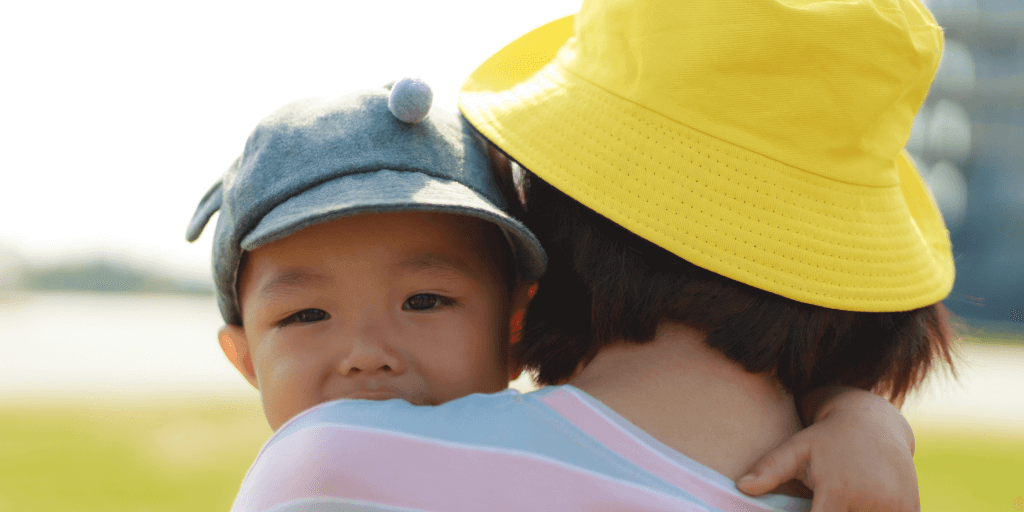
Hats off to you!
This ‘Hats off to you’ blog article was written by Ariel Ford and Sarah Carr, Therapeutic Specialists in the Therapeutic Services Canberra team, at the Australian Childhood Foundation.
Our understanding of attachment, neuroscience, co-regulation, interpersonal intersubjectivity, and therapeutic parenting, in the role of healthy childhood development, keeps on growing. So, we would like to ask, have we begun to push our carers and parents beyond the safe limits of multiple hat wearing?
Do we ask people to be everything and perform every role for children in their care, often without adequate support or without reprieve or respite? Do we ask them to attune so much and so often, that as a society we have begun to endorse the idea that an unbroken feeling of connectedness to our children and “doing it all” at all times is a marker of successful parenting?
We thought that it may be helpful to bring awareness to the number and variety of hats parents and carers are asked to wear. These hats represent both expectations we place on ourselves to meet children’s needs, as well as expectations others put on us. These can look different in various cultural or personal contexts.
If we take a step back to look at the hats worn by those who care for children in our society today, the weight of expectation they hold becomes quite evident.
Welcome to the daily routine of a multi-hat wearing carer / a.k.a. the “Hat Emporium”:
The Artist’s Beret (Creating) – Set the kids up with paints, they seem quiet for now. Oops, I spoke too soon, the kids are yelling and then from nowhere, appears a gorgeous, abstract painting on my clean white wall. And, I only left for a minute to bring the washing in!
The Chef’s Hat (Cooking) – What am I going to cook for dinner tonight? How long will this take and will the kids be happy with what’s on the menu? Everyone is now fed but can’t forget about washing up and packing lunches for tomorrow. Is this Mac-N-Cheese healthy?
The Baseball Cap (Sporting) – Quick, grab your gear. We’re off to tennis class! But not until we’ve dropped off your brother to soccer and picked up the baby from grandma’s.
The Umpire’s Hat (Mediating) – The kids begin fighting over the front seat again and this time it’s serious. Even the head of the United Nations couldn’t reach a peace accord for this crisis.
The Graduation Cap (Educating) – Homework time. Everyone, please sit still while we work out how to measure how many cubic millilitres fit into the space of the MCG.
The Woolly Beanie (Soothing) – Finally, it’s bedtime. But not before we flood the bathroom from shower antics and read a story (or 3), in a perfectly engaging and unique method acting voice.
The Top Hat (Providing) – Everyone is quiet and tucked up in bed. I can finally take a breath and get back to those work emails. Emails have now multiplied by 10 and I’ve just realised tomorrow’s deadline.
The Helmet (Protecting) – Sitting on the couch I’m thinking to myself; “How can I support my little girl to be successful at university if can’t even remember how to do fractions?” or, “Is that sniffly nose serious and does she have everything she needs?”.
These are just some of the hats we wear and there may very well be more or less, depending on your circumstances or the role you play in a child’s life. Sometimes carers might also wear scrubs or a swimming cap and a magician’s hat, all the while, responding authentically minute-by-minute to a child’s emotions and taking care of themselves and often other family members.
It’s alarming how quickly we accumulate hats and how as a society we absorb the pressure to maintain these quite exhausting and disorienting expectations.
For some in our society, this is not a new story. We may have watched our parents and grandparents selflessly wear these hats for generations before, but have you ever thought that the latest range of headwear has grown exponentially, again? Perhaps, bringing awareness to the assumptions we place on ourselves can help us navigate all those hats more effectively and feel more okay with the fact that the perfect outfit doesn’t require more hats.
